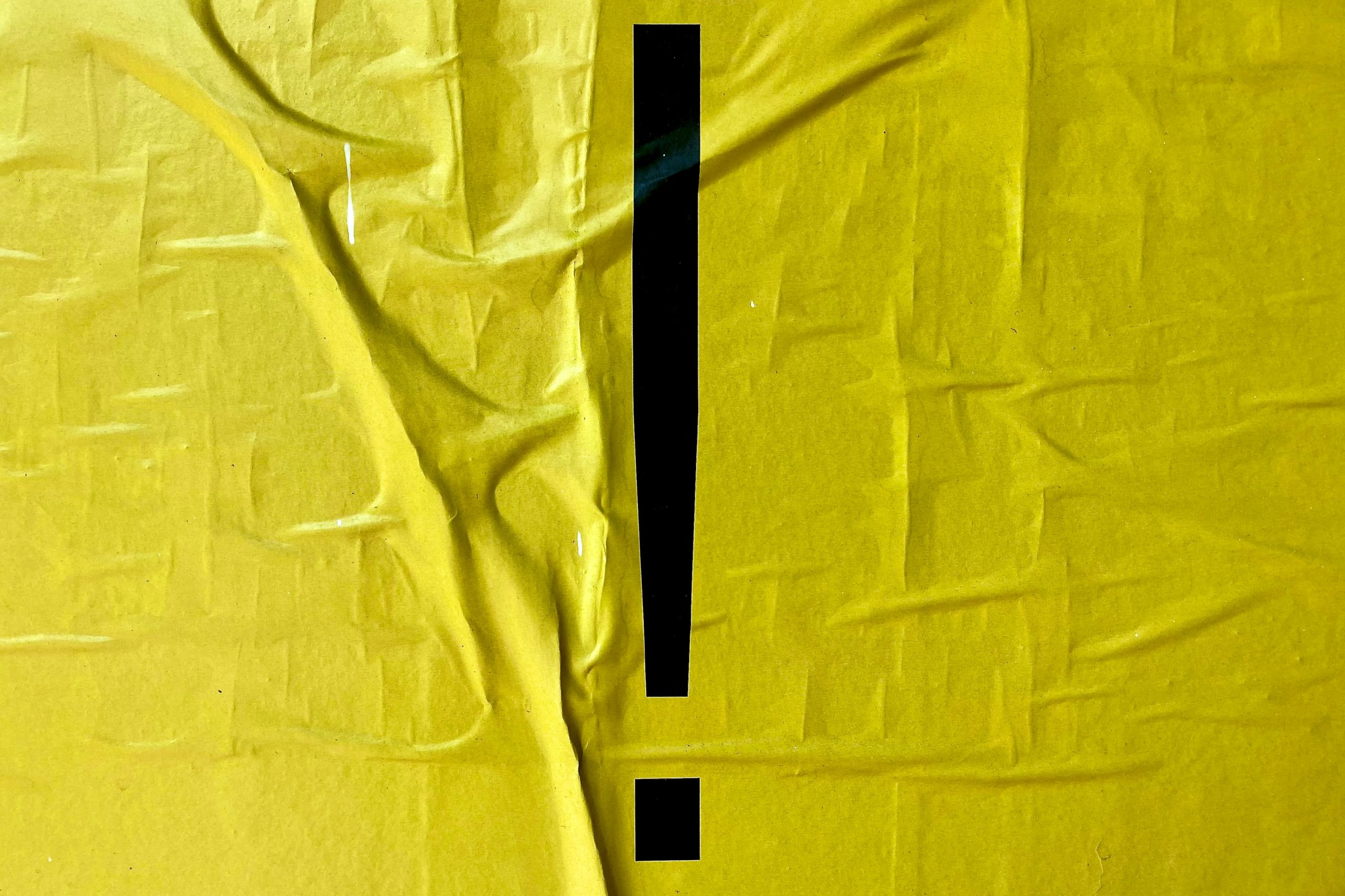Exclamation marks are, as far as punctuation goes, a taboo topic in the writing world. When should you use them? Should you ever? What are the consequences of employing the mark? And how does that differ between men and women? It’s hard to believe that a line and a dot could cause so much debate, but exclamation marks have been controversial since their invention. Where does this bias come from?
The History of Exclamation Marks
Though exclamation marks were not included on the standard keyboard until the 1970s, their origins trace back to Ancient Rome. Linguists Alexander and Nicholas Humaz describe in their book On the Dot: The Speck that Changed the World how the mark began as the “superimposing of the I and O of the Latin exclamation Io!” The ancient phrase, meaning “joy” in English, was used to punctuate expressive statements or communicate pleasant surprise — much like the modern exclamation mark. Over time, the I shifted closer to the O, and the O began to shrink in comparison. By the end of the 14th century, Italian poet Iacopo da Urbisaglia officially “invented” the marking, naming it the punctus admirativus, or the mark of admiration.
Since then, the exclamation mark has been met with great opposition. It’s not just your high school English teacher who disapproves of its use; even famous writers call the mark undisciplined. American novelist F. Scott Fitzgerald famously claimed that using an exclamation mark is much like “laughing at your own joke,” and German philosopher Theodor Adorno called it “a desperate written gesture that yearns in vain to transcend language.” Even grammar books, which should be the most equipped to defend the punctuation mark, recommend only its selective use.
But why is the exclamation mark so hated? As is true with much else, the answer is rooted in misogyny.
Women have been authoring texts for as long as they’ve known how to write, but female authors did not begin to gain traction in the literary world until the turn of the 20th century. Even so, such traction was hard to come by: contemporary male authors like Fitzgerald, Ernest Hemmingway, and Arthur C. Clarke detested women writers, so they popularized several unfounded judgments that separated their accepted male writing style from that of their female counterparts. Among these claims was that exclamation marks, known for their emotion and already disliked by writers, were a distinctly feminine practice and thus had no value in proper writing.
Though such blatant attacks against women writers are less prominent in the 21st century, the association of exclamation marks with femininity persists. Results from a 2006 study found that women are responsible for 73% of the mark’s use in office settings. In an act to appear friendly, women are more likely to swap a period for an exclamation mark compared to their male peers. The same study goes on, “When elements of speech and writing are associated with a female communication style, they tend to be described in negative terms.” Thus, exclamation marks become a lose-lose situation for women: using them makes their writing sound less professional, and avoiding them makes their writing sound rude.
The connection between exclamation marks and unprofessional communication, which is apparent to any woman who’s ever written an email or composed a report, finally explains why writers disapprove of the mark: it represents women, so men do not respect it.
A Call for Change: Exclamation Marks Should Be Professional
Business Insider contributor Danny Rubin writes, “Today, social mores have changed, and the default setting is often business casual. That applies to everything from the clothes we wear to how we communicate. Does that mean it’s OK to fill our emails with exclamation points? I say no.” Well, I say yes.
As professional communication evolves, it’s essential that we evolve with it. We don’t live in a world of dry-cleaned suits and paper memos anymore; especially since the COVID-19 pandemic, more and more work is taking place remotely, which makes the effective use of digital communication crucial to corporate success. The way peers communicate in Slack channels or Microsoft Teams chats is a critical representation of the internal function of a company. To maintain positive correspondence that does not fall victim to the monotony of alphabetic text, we utilize exclamation marks and other expressive punctuation in professional communication.
But changing the practice of implementing exclamation marks isn’t so simple. There is no official rule that prohibits people from using the mark; rather, it is centuries of bias and disapproval that make pressing that key difficult for so many. To break the cycle of controversy and change this unwritten rule, individuals must decide to start exclaiming again, one by one.
The Risk of Seeking Change
Though the benefits of the mark are clear, it’s important to consider that with any change comes the risk of backlash. Given the misogynistic bias against exclamation marks, every person considering their use must ask themselves: Do the benefits outweigh the risks?
In an article published by BBC in 2019, Emily Torres argues that adopting the regular use of exclamation marks poses a greater risk for women than the potential reward is worth. She suggests that women, who account for 73% of the mark’s use, are conditioned to employ exclamation marks to accommodate their male peers. Torres remarks on her personal office experience to illustrate her point: “I fear that I won’t get what I want or need, so I soften my tone and emphasize my interest. I add a layer of friendliness because I don’t want to be perceived as cold. Each unnecessary exclamation mark is a little request to my recipient ‘to please like me, and please say yes.’”
Though the benefit of exclamation marks remains, it would be negligent to ignore Torres’s point: women, especially the first to increase their use of the mark, might receive backlash from their peers. It is possible that, as the responses of Fitzgerald et al. illustrate, men might become more vocally critical of women who use such “unprofessional” punctuation. Or, worse perhaps, as Torres suggests, an increased use of exclamation marks may prove a gateway behavior for poor self-respect. “It’s not just the punctuations,” she explains, “it’s the way I speak in meetings. It’s the way I agree to things when I’d rather object. It’s the way I set (and do not set) boundaries for my own time. When I accommodate others in a way that puts my own needs and projects second, I am failing myself.” And it all starts with a line and a dot.
When it comes to changing our collective perspective on exclamation marks in professional communication, it’s essential to be aware of these potential unintended consequences. But whether said risks should prevent the implementation of the mark altogether, is a personal judgment call.
This Is About So Much More than Exclamation Marks
It’s not just exclamation marks that are unprofessional; any kind of expressive communication, from emojis to internet slang, is taboo in the corporate world because of its association with women. But such an argument is outdated. If the standards for professional writing are to exclude the exclamation mark, they must levy legitimate arguments against it. The fact of the matter is, if a person wants to exclaim a phrase rather than state it, they, regardless of gender, should be at liberty to do so without social consequence.

















